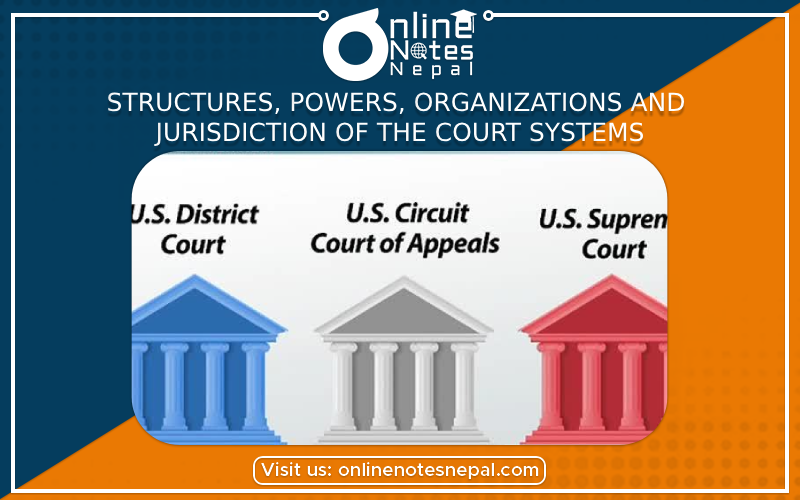Published by: Anu Poudeli
Published date: 02 Aug 2023

1. Court System Organizations:
To ensure efficient administration of justice, court systems are arranged hierarchically. The structures vary by country, but they generally consist of the following levels:
a.Trial Courts (First Instance Courts): These are the lower courts where matters are heard for the first time and evidence is presented. They ascertain the facts of a case and apply the applicable laws.
b. Appellate Courts (Intermediate Courts): If a party is unhappy with the trial court's ruling, they can appeal to the appellate courts. These courts review the decision of the trial court to ensure that the correct law was applied and that legal procedures were followed.
c. Supreme Courts (Court of Last Resort): The highest court in a country's judicial system. It analyzes lower court rulings, resolves key legal questions, and provides the final interpretation of the law.
2. Courts' Authority:
a. Adjudication: Courts' principal purpose is to resolve disputes between parties and to interpret and apply the law to specific instances.
b. Judicial Review: In some countries, courts have the power of judicial review, allowing them to review and overturn unconstitutional or unlawful laws or actions.
c. Contempt of Court: Courts have the jurisdiction to hold people in contempt if they interrupt proceedings, fail to follow directions, or act disrespectfully towards the court.
3. Courts' Organizations:
a. Judges: These individuals preside over court proceedings, apply the law, and render decisions.
b. Attorneys/Lawyers: Present arguments and evidence on behalf of the parties in court.
c. Court Clerks: Assist with administrative chores, record keeping, and document maintenance.
d. Jury: In some criminal and civil proceedings, a group of persons known as the jury is chosen to determine facts and make a judgement.
4. Court of Appeal Jurisdiction:
a. Subject Matter Jurisdiction: This refers to the types of cases that a court can consider. Some courts have limited jurisdiction, hearing just certain sorts of cases (for example, family court), whilst others have broad authority, hearing all types of cases.
b. Territorial Jurisdiction: Courts have jurisdiction over cases that occur within a certain geographic area or territory.
c. Personal Jurisdiction: The authority of the court over the parties involved in a matter. A defendant must have sufficient connections or contacts with the court's jurisdiction for the court to have personal jurisdiction.
d. Original Jurisdiction: A court's authority to hear a case for the first time, as opposed to appellate jurisdiction, which entails reviewing lower court rulings.
It is crucial to remember that court systems can be complex, and the specifics of their structures, powers, organizations, and jurisdiction can vary greatly from one country or legal system to the next. The information presented above is a general summary.